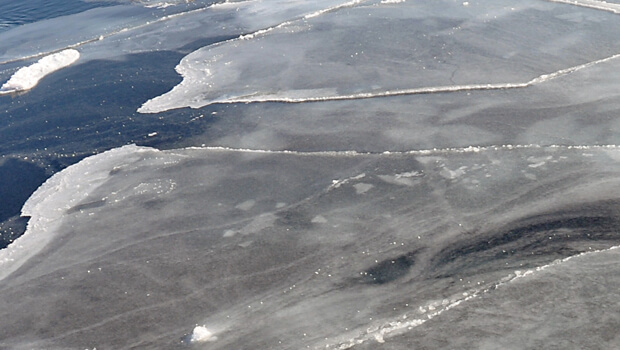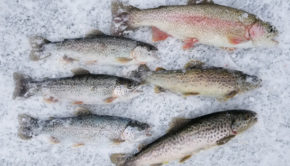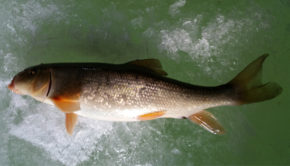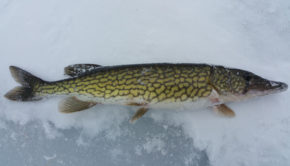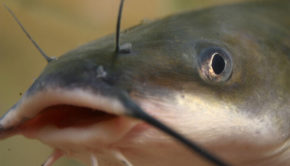Early ice: finding the first lakes to freeze
It is that time of the year again. Ice fishing season may already be underway for some in the far north. But the rest of us are still waiting for the ponds and lakes we ice fish to start freezing over. In many parts of the US, ice fishing usually isn’t possible until Christmas or later.
A lot of ice fisherman live on the edge of the ice belt. That means that the ice fishing season can vary in length. Some years you will get a solid month or two of fishable ice. Other years you might only get a few scattered days with enough safe ice to stand on.
So what are you to do when you have the itch to get on the ice, but all you see is open water around you? You can either travel several hours north, or you can find the early ice closer to home. No matter where you are, there are going to be some bodies of water that freeze before others. Here’s how to find them.
Avoid springs and wind
Besides regular old warm weather, there are a few things that can keep a body of water from freezing. Springs and wind are some of the major things to watch out for. If you’re looking for early ice, you are going to want to avoid both.
Spring-fed ponds and lakes are filled with water that is at a constant temperatures. The ground comes up from underground. In the summer, the water is usually cold. That’s why trout can live year round in a lot of spring fed bodies of water. But in the winter, the water can actually be too warm. Remember that the freezing point of water is 32 degrees. Spring water is cold, but it is not that cold!
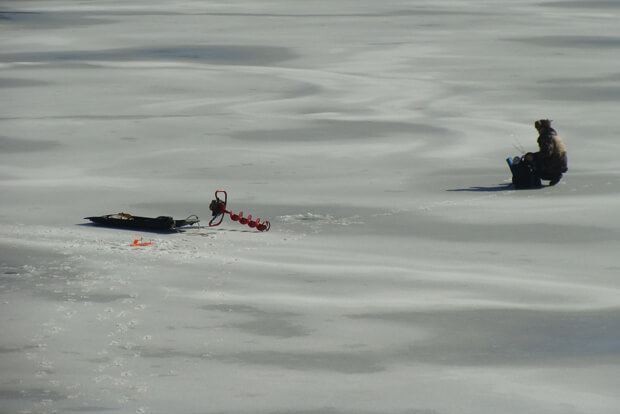
Even when lakes do freeze over, springs can still cause problems. If you have ever been ice fishing on a lake with springs, you have probably seen the effects. Wherever springs flow in, the ice is usually a lot thinner. Or it might be missing all together. That’s why ice fishing safety involves avoiding spring inlets!
Wind is another thing to avoid. While wind swept areas feel cold to us, they aren’t good for making ice. When the wind keeps blowing over the top of the water it actually impedes ice formation. So if your favorite like is getting hit by heavy winds early in the season, it might not lock up. Meanwhile lakes trapped high up in the mountains where they are shielded from the wind will be freezing over nicely.
Look for lakes at high elevations
Lakes at higher elevations freeze faster than those closer to sea level. So you can look to mountainous areas like the Poconos and the Adirondacks when you are looking for early ice. The lakes and ponds there almost always freeze first. You can be an hour away with no ice in sight, only to drive up the mountain and find lots of frozen bodies of water.
High Point lake in Pennsylvania is a good example. As the name would suggest, that lake is the highest body of water in the state. You can’t find a lake or pond at any higher elevation. High point is on the southern edge of the ice belt. Ice normally comes late in that area, and it can be spotty even when it arrives. Not so much at High Point. The lake freezes before pretty much every other lake around. It usually stays frozen longer too.
To find the highest elevations around you, just look for mountains. Or you can check out the elevations by looking at Google maps. Just search your home area, then switch to the “terrain” view. You’ll be able to see which bodies of water are higher than others.
Safety first on first ice
Whatever you do, make sure to follow basic safety precautions. Don’t just rush out onto the first ice you see loaded down with accessories. Early ice can be dangerous if you don’t watch out. A lot of time it just isn’t good quality.
Before a solid cold front sets in, the temperature can change a lot. You can have two cold days followed up by a warm day. Then more cold days come along. You can also have a combination of warm rain and wet snow. There are all sorts of things that can mess up the early ice before it really locks for the winter.
You might even be tempted to try to fish ice that you really know isn’t safe. We’re all eager to get on the ice, but it’s not worth risking your life. Make sure the ice really is good before you head out. Check the ice thickness around the shore and again as you make your way out. Look out for thin spots and pressure points. Wear a pair of ice awls around your neck for safety. Carry a spud bar too, and use it! That way you can stay around and ice fish more in the future.

